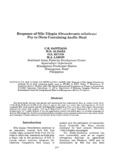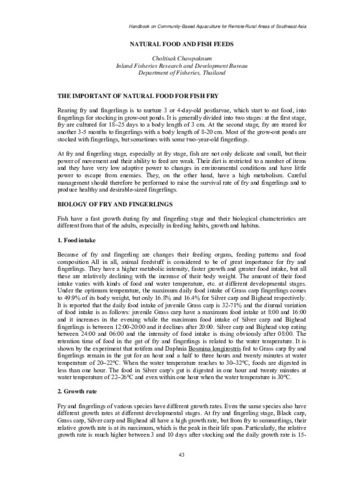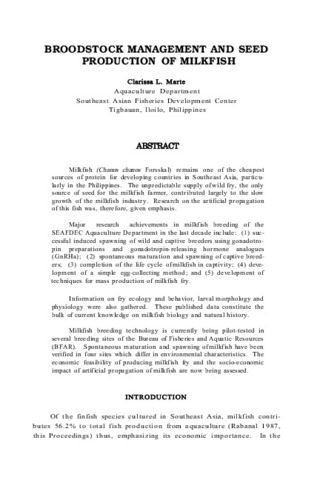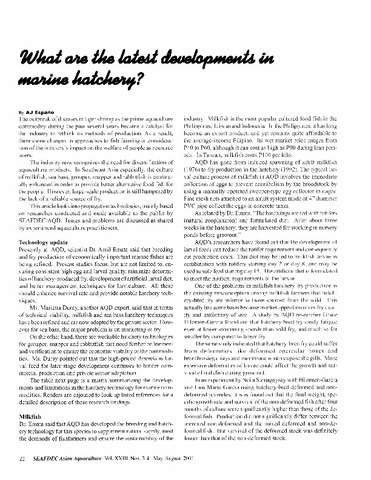Response of Nile tilapia (Oreochromis niloticus) fry to diets containing Azolla meal
Share
Abstract
Sun-dried Azolla pinnata was ground and incorporated into experimental diets at various levels (8.50, 17.00, 25.46, 34.00 and 42.45% of the diets) to replace fish meal in a control diet isonitrogenously. All feeds contained 35% crude protein and 250 kcal digestible energy/100 g. They were fed to Nile tilapia (Oreochromis niloticus ) fry (mean body weights, 14.9 mg in Experiment I and 11.2 mg in Experiment II) at 45% of fish biomass daily for 7 weeks. Results of the 2 experiments showed that Azolla meal is a suitable component of diets for Nile tilapia fry. Growth increased and feed conversion ratios improved as the level of the dietary Azolla meal increased. Survival rates were not affected by the levels of Azolla in the diets.
Suggested Citation
Santiago, C. B., Aldaba, M. B., Reyes, O. S., & Laron, M. A. (1988). Response of Nile tilapia (Oreochromis niloticus) fry to diets containing Azolla meal. In R. S. V. Pullin, T. Bhukaswan, K. Tonguthai, & J. L. Maclean (Eds.), The Second International Symposium on Tilapia in Aquaculture, 16-20 March 1987, Bangkok, Thailand (pp. 377-383). Bangkok, Thailand: Department of Fisheries.
Subject
Collections
Related items
Showing items related by title, author, creator and subject.
-
Natural food and fish feeds
Chawpaknum, Choltisak (Secretariat, Southeast Asian Fisheries Development Center, 2008)Rearing fry and fingerlings is to nurture 3 or 4-day-old postlarvae, which start to eat food, into fingerlings for stocking in grow-out ponds. It is generally divided into two stages: at the first stage, fry are cultured ... -
Broodstock management and seed production of milkfish
Marte, Clarissa L. (Aquaculture Department, Southeast Asian Fisheries Development Center, 1988)Milkfish (Chanos chanos Forsskal) remains one of the cheapest sources of protein for developing countries in Southeast Asia, particularly in the Philippines. The unpredictable supply of wild fry, the only source of seed ... -
What are the latest developments in marine hatchery?
Españo, A. J. (Aquaculture Department, Southeast Asian Fisheries Development Center, 2001)





